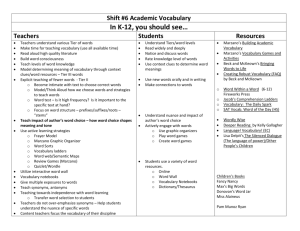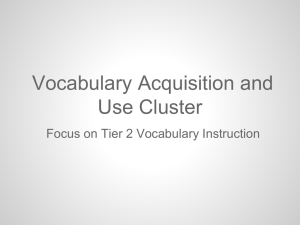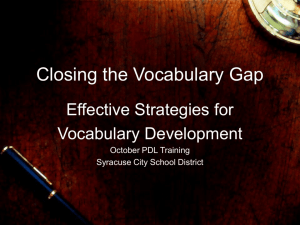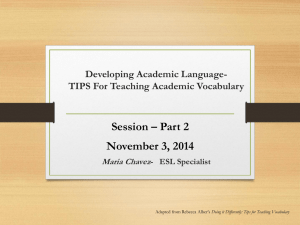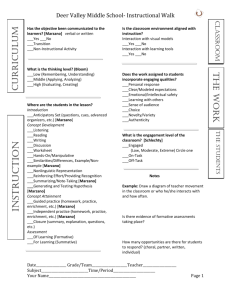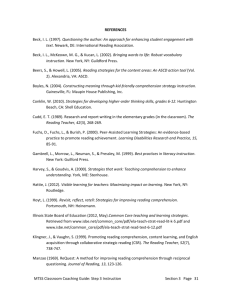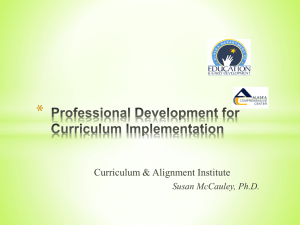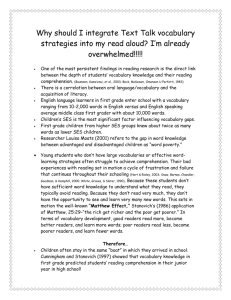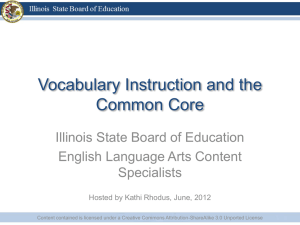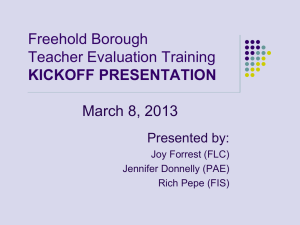Class 7
advertisement
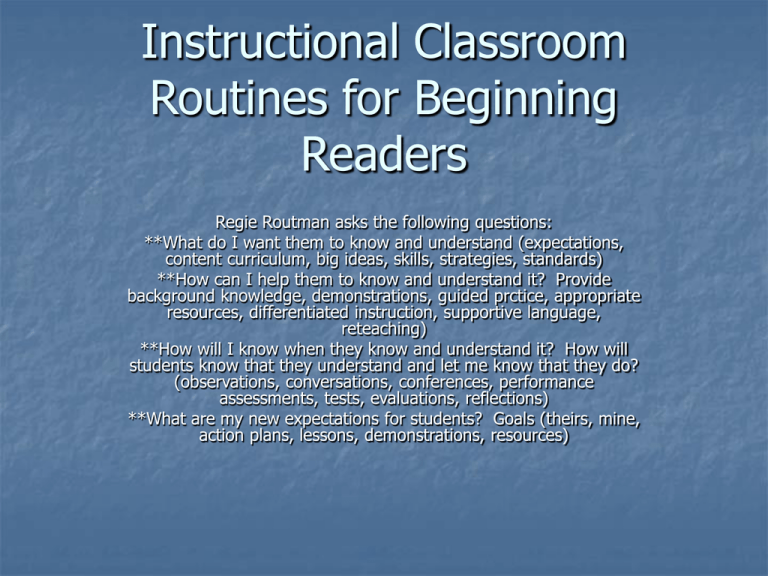
Instructional Classroom Routines for Beginning Readers Regie Routman asks the following questions: **What do I want them to know and understand (expectations, content curriculum, big ideas, skills, strategies, standards) **How can I help them to know and understand it? Provide background knowledge, demonstrations, guided prctice, appropriate resources, differentiated instruction, supportive language, reteaching) **How will I know when they know and understand it? How will students know that they understand and let me know that they do? (observations, conversations, conferences, performance assessments, tests, evaluations, reflections) **What are my new expectations for students? Goals (theirs, mine, action plans, lessons, demonstrations, resources) Rereading: one of the most effective strategies for struggling readers Comprehension increases with rereading. Encourage students to reread! Classroom Routine Demonstration Shared demonstration Gradual handover of responsibility Guided practice Independent Practice Sharing Alternative Programs Reading 180 Horizons Soar to Success Corrective Reading Edmark Other? Vocabulary Students learn 95% of their vocabulary indirectly through listening to adults speak and read out loud. (Beck, McKeown) Some vocabulary requires direct instruction with guided practice. To build academic vocabulary, Marzano suggests a structure for sustained silent reading (We will learn about R5 next week!) as well as teaching academic vocabulary using six steps Marzano & Beck on Vocabulary Marzano feels it is critical to “enhance students academic background knowledge which should be “at the top of any list of interventions intended to enhance student achievement”. Beck says the goal of vocabulary instruction should be: comprehension of text, language comprehension development & teaching students how to learn words. When to Introduce Words Before Reading (for comprehension)—do just briefly On the spot (just when needed---do briefly) After reading (words for keeps, more extensive interactions) What Words Should You Teach? Beck and Marzano differ greatly! Beck has categorized words into three tiers **Tier 1 are basic words: clock, baby, happy, chocolate **Tier 2 are high frequency words for mature language learners: degnified, absurd, astonish (characteristic of mature language learners— found in written work) **Tier 3 are words whose frequency of use is quite low, often limited to specific domains like isotope, peninsula, lathe Marzano says to teach academic vocabulary & get results! McKeown on How to Teach! Add playfulness to your language—tone up your own language/ “clear your desks”—What do I mean by clear desk? What does a clear desk look like? What about a clear sky? What does that look like? Am I making myself clear? Wait a minute! Is that like a clear desk? For K/1—bring in vocabulary—absurd for silly, etc. Comparison of vocabulary choices from Officer Buckle & Gloria Program Vocabulary from basal: **department, obeys, commands, audience, expression, accident Rich Vocabulary you may find: Expression, mockery, monotonous, perturbed, humiliated, companions How Do We Introduce Words? Dictionary definitions: 63% of sentences from dictionary definitions are judged odd 60% of responses were unacceptable: “The colonists were exotic in America.” “He was devious on his bike.” Student friendly definitions: describe meaning in everyday connected language They characterize a word’s typical use Often they include words such as “you”, “something” and “someone” Effective Instruction (from Beck, McKeown) Offer frequent encounters Offer explanations/examples/student actively responding/relationship among words/extension beyond the classroom like a “word wizard” chart Format: Contextualize its role in the story Furious: In the story, the teacher was furious when Wendall & Flooyd missed their math test. That means she was very angry that they missed their test. How to teach vocabulary, con’t Provide a friendly explanation of the word’s meaning: When someone is furious, they are so mad they can hardly speak. Provide an example beyond the story context: You might feel furious if your friend invited everyone in the class but you to a party. Marzano’s Six Steps for Teaching Vocabulary Marzano says that teaching academic vocabulary will propel students the furthest with achievement Use oral description, explanation or example (examples/non examples are helpful) Students restate the new term in their own words (use of academic notebook for vocabulary for all academic areas) Students add description/representation with new insight Marzano’s six steps, con’t Students create nonlinguistic representation of the term (do a drawing, or graphic organizer or pictograph, etc. immediately) Students do activities which help them add to their knowledge (they compare, classify, revise initial descriptions, need multiple exposures and practice) Ask students periodically to discuss the terms with one another (student interaction is critical for vocabulary!) Do regular subject matter sessions and students should have time for these discussions of vocabulary Periodically have games to allow students to play with the terms **Note Text Talk in the back of Bringing Words to Life--lists books for vocabulary instruction, K-2.
